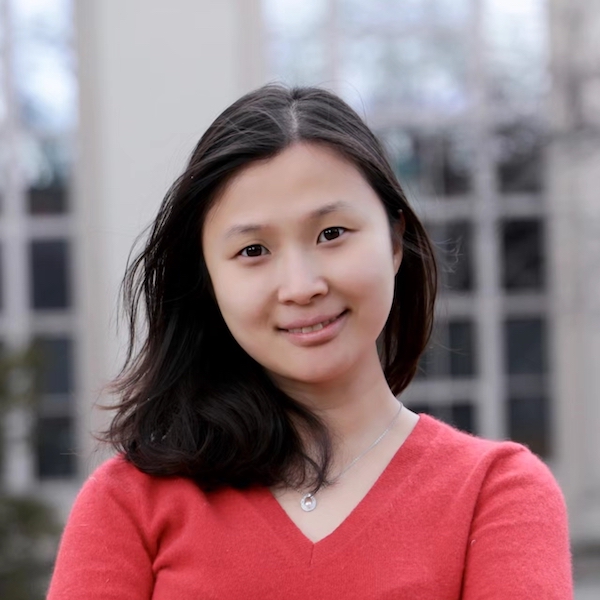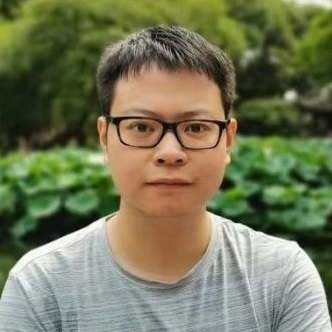Rachel Woods-Robinson
Rachel Woods-Robinson (she/her) is a CEI Distinguished Postdoctoral Fellow, with a collaborative appointment at the National Renewable Energy Laboratory (NREL). Dr. Woods-Robinson’s research focuses on assessing environmental and human impacts of scaling solar photovoltaic (PV) materials and other emerging technologies to address the climate crisis. Her research interests span from the nanoscale, such as sustainable materials discovery of new crystals for renewable energy, to the terawatt scale, such as strategies to scale photovoltaics to 2050 net-zero goals. She is mentored by Alberta “Birdie” Carpenter at NREL, is hosted at the UW by David Ginger, and collaborates with industrial partners. Dr. Woods-Robinson received her Ph.D. in...
Douglas A. Reed
Assistant Professor of Chemistry The Reed lab makes microporous materials - solids with molecule-sized pores and atomically thin walls that result in very high surface areas. While typical microporous materials are made with rigid and insulating walls, our group utilizes new types of chemical bonds that are flexible or conductive, making the resultant structures amenable for efficient greenhouse gas capture, water purification, energy storage, or alternative energy production. Email | Website...
Shijing Sun
Assistant Professor of Mechanical Engineering Dr. Shijing Sun's research lies at the crossroads of materials science, data science, and robotics, driving interdisciplinary studies into autonomous materials design for clean energy technologies. With a vision to address global energy, climate, and sustainability challenges, Dr. Sun’s interests span from understanding the fundamental structure-function relationships of inorganic materials to tool development incorporating artificial intelligence for amplified research capacities and efficiency. She joined UW from the Toyota Research Institute where she worked on EV energy storage. She previously worked at MIT applying data science to thin film photovoltaics. Email | Website | LinkedIn...
Yifei He
Conjugated polymers (CP), a solution-processable and mass-producible semiconducting material, are a promising candidate in the application of organic solar cells. One important factor that determines the light-electricity conversion efficiency of CPs is the morphology. My research will thus primarily investigate the method to control the microstructure of the thin films via accurate copolymerization. The ultimate goal of my project is to establish the knowledge about the relationship of molecular structure-morphology-optoelectronic performances, which contributes to the future design of high performance polymers in solar cells that could be mass manufactured. Advisor: Christine Luscombe - Materials Science & Engineering...
Madeleine Breshears
My research focuses on merging data science and machine learning techniques with functional scanning probe microscopy (SPM) to better understand energy materials. We are currently experiencing a convergence of advancement in both data science techniques and scanning probe microscopy resolution and functionality. I aim to take advantage of this confluence to evaluate the spatial heterogeneity of photovoltaic materials. SPM allows us to visualize surface photovoltage, charging rate, chemical composition, and morphology on the nanometer scale. These multimodal techniques produce incredibly dense, multidimensional data that naturally encourage the use of machine learning to extract meaningful information more efficiently. Specifically, I am working on using neural...
Yangwei Shi
I will focus on fabrication and characterization of organic-inorganic halide perovskite solar cells which are regarded as a promising photovoltaic technology. My projects include passivation of mixed cation mixed halide wide-bandgap perovskite, aiming to improve the photoluminescence quantum efficiency of perovskite and to achieve a higher open-circuit voltage that approaches the theoretical limit. In addition, I will focus on developing a solution processed recombination layer with matched refractive index and good conductivity for tandem perovskite/silicon solar cell. Based on the low defect density of wide bandgap perovskite and solution processible recombination layer, the efficiencies of tandem perovskite/silicon solar cells can be further increased. Advisor: David...
Anne Goodchild
Dr. Anne Goodchild leads the University of Washington's academic and research efforts in the area of supply chain, logistics, and freight transportation. She is Professor of Civil and Environmental Engineering, and serves as Founding Director of both the Supply Chain Transportation & Logistics online Master's degree program and the Supply Chain Transportation & Logistics Center, the latter which launched the Urban Freight Lab (UFL) in 2016 to bring together the public and private sectors to address the challenges of the urban freight system by engaging in innovative research. Email | Website...
Lixin Lu
Doped metal-halide perovskites CsPbX3 (X=Cl, Br or I) nanocrystals (NCs), which combine the desirable broadband absorptive properties of perovskite semiconductors with the richly tunable color emission profiles of sensitized metal ion dopants, have a great potential in the application of high-efficiency solar cells, LEDs, and lasers. Successful doping of various trivalent lanthanide ions (or rare earth ions, RE) into colloidal perovskite NCs has been recently reported. For example, ytterbium (Yb3+)-doped CsPbX3 exhibits over 100% photoluminescence quantum yields (PLQY) as a result of picosecond quantum cutting process, indicating its opportunities to serve as downconverters in solar-energy-conversion technologies. Despite of the experimental evidence, the electronic structural...
Nada Naser
My research focuses on the integration of solid binding peptides (SBPs) within the framework of proton-transporting transmembrane proteins to create new devices and materials that will enable next-generation energy systems. SBPs are combinatorially selected peptides that bind with high affinity to inorganic materials. By genetically inserting these peptides at various sites of functional transmembrane proteins (e.g., light-activated ion transporters), and by exploiting emerging techniques to isolate and stabilize the resulting chimera in polymeric nanoparticles, I intend to fabricate new devices to control charge transfer and chemical potential across interfaces in response to light illumination. Additionally, I am interested in developing responsive materials in which...
Xiaofeng Xiang
Photovoltaic devices are important for the renewable clean energy system. Today, silicon-based solar modules keep dominating the market, but various emerging techniques based on thin-film inorganic semiconductors are rapidly developing. Among thin-film technologies, chalcopyrite Cu(In, Ga)Se2 (CIGS) shows excellent light conversion efficiency. The primary goal of my research is to develop modeling tools for design and optimization of CIGS fabrication and device operation processes. To achieve this goal, the first step is to understand the fundamental chemical reactions or physical phenomenons happening during manufacturing processes. Next, I would apply first principle calculations and use device simulation software to understand thermodynamic or kinetic aspects of the materials. Finally,...
Preetham Paul Sunkari
The overarching goal of my research is to pioneer new methods to forecast the degradation of perovskite semiconductors and photovoltaic devices. Perovskite solar cells (PSC) showed a rapid increase in power conversion efficiencies from 14% to 25.2% in just seven years. But their poor stabilities have questioned the practicality of their operational deployment. To study the stability of PSCs, I plan to investigate material-level optoelectronic quality changes in perovskite films under different thermal, light, oxygen, and humidity stresses through in-situ photoluminescence (PL) and dark field (DF) microscopy, photoconductivity, and film transmittance measurements. Based on trends in this data, the dominating degradation mechanisms and the...
Margherita Taddei
Today, one of the most pressing issues for our society is to meet the constant increase in energy demand with sustainable alternatives. For this reason, scientists are looking for clean and renewable energy sources. In the solar energy field, perovskite solar cells (PSCs) have attracted a lot of attention due to their incredible increase in efficiency from 3.8% to 25.2% in only 10 years of research. The main issues encountered in PSCs are the presence of toxic cations, low efficiency, and stability. Therefore, for future commercialization, it is necessary to develop eco-friendly, stable, and efficient perovskite materials. My work focus on finding new solution-processable environmentally-friendly...















